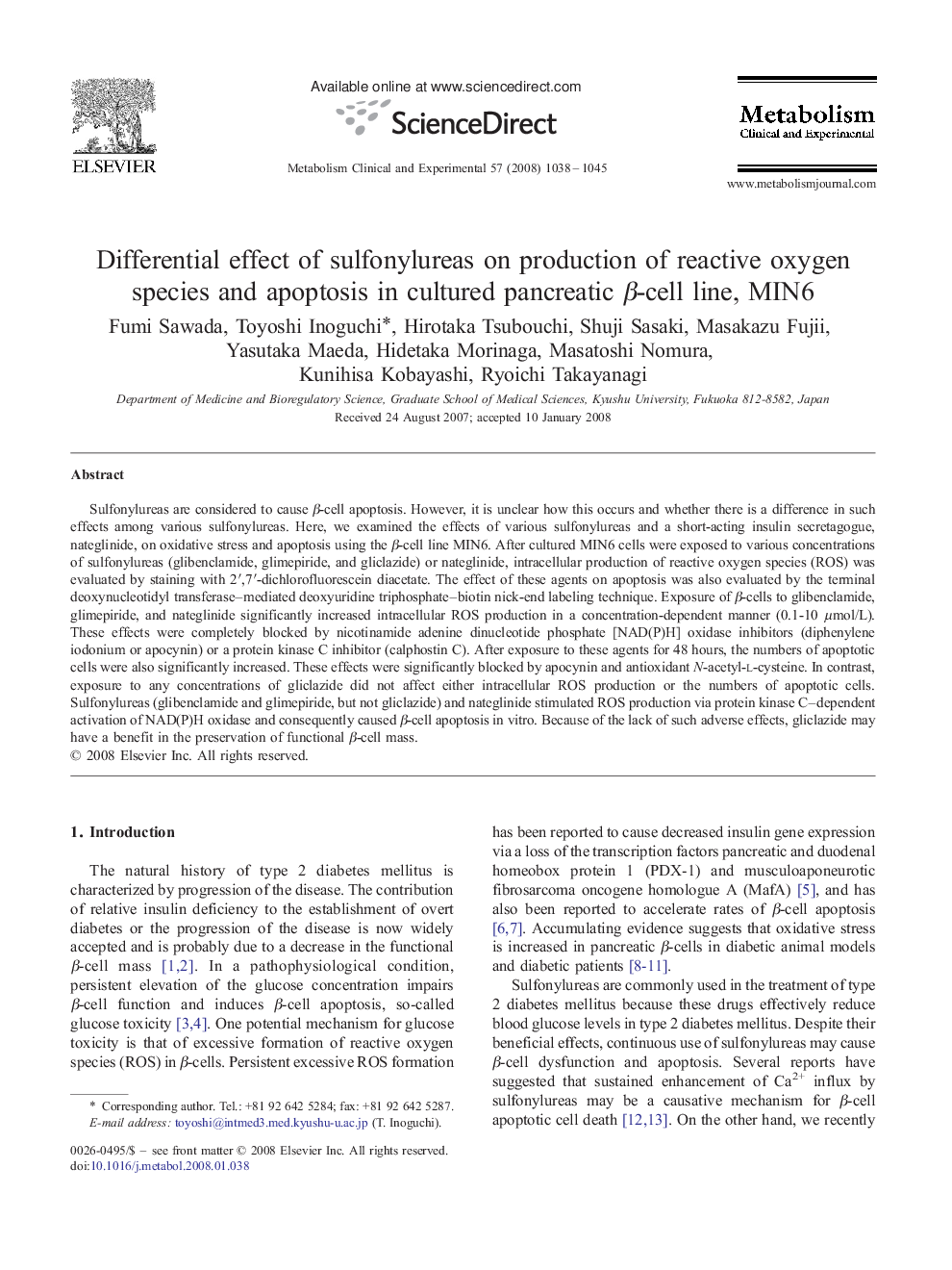| کد مقاله | کد نشریه | سال انتشار | مقاله انگلیسی | نسخه تمام متن |
|---|---|---|---|---|
| 2806942 | 1157140 | 2008 | 8 صفحه PDF | دانلود رایگان |

Sulfonylureas are considered to cause β-cell apoptosis. However, it is unclear how this occurs and whether there is a difference in such effects among various sulfonylureas. Here, we examined the effects of various sulfonylureas and a short-acting insulin secretagogue, nateglinide, on oxidative stress and apoptosis using the β-cell line MIN6. After cultured MIN6 cells were exposed to various concentrations of sulfonylureas (glibenclamide, glimepiride, and gliclazide) or nateglinide, intracellular production of reactive oxygen species (ROS) was evaluated by staining with 2′,7′-dichlorofluorescein diacetate. The effect of these agents on apoptosis was also evaluated by the terminal deoxynucleotidyl transferase–mediated deoxyuridine triphosphate–biotin nick-end labeling technique. Exposure of β-cells to glibenclamide, glimepiride, and nateglinide significantly increased intracellular ROS production in a concentration-dependent manner (0.1-10 μmol/L). These effects were completely blocked by nicotinamide adenine dinucleotide phosphate [NAD(P)H] oxidase inhibitors (diphenylene iodonium or apocynin) or a protein kinase C inhibitor (calphostin C). After exposure to these agents for 48 hours, the numbers of apoptotic cells were also significantly increased. These effects were significantly blocked by apocynin and antioxidant N-acetyl-l-cysteine. In contrast, exposure to any concentrations of gliclazide did not affect either intracellular ROS production or the numbers of apoptotic cells. Sulfonylureas (glibenclamide and glimepiride, but not gliclazide) and nateglinide stimulated ROS production via protein kinase C–dependent activation of NAD(P)H oxidase and consequently caused β-cell apoptosis in vitro. Because of the lack of such adverse effects, gliclazide may have a benefit in the preservation of functional β-cell mass.
Journal: Metabolism - Volume 57, Issue 8, August 2008, Pages 1038–1045